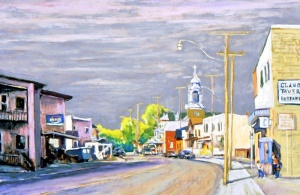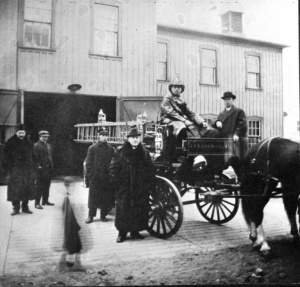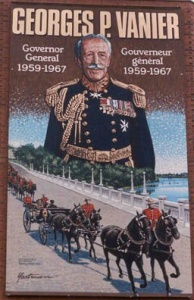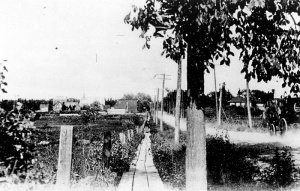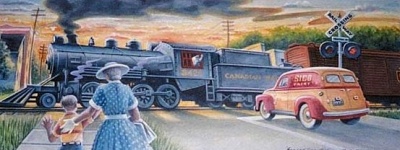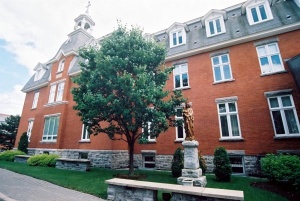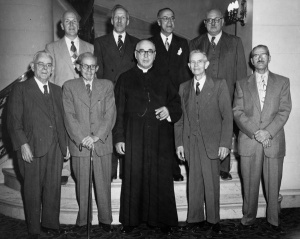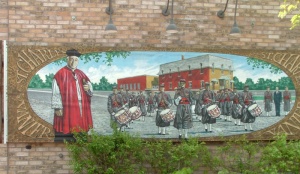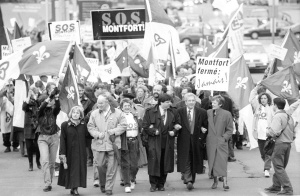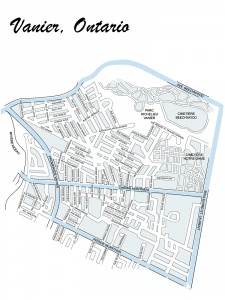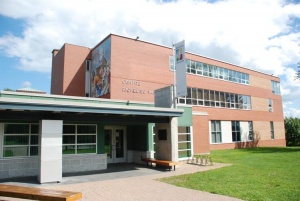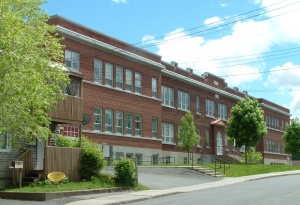Vanier: French-Speaking Bastion in Ontario
par Benali, Kenza and Parent, Jean-François
Vanier began as a small village east of the Rideau River. Its real period of growth started in the mid-nineteenth century when the lumber trade led to the development of the Ottawa area. Working-class French Canadians settled there, making it one of the largest French-speaking areas in what would become the capital of Canada. Vanier developed quickly in the 20th century and, increasingly, it identified itself as the city’s main French-speaking bastion. While it did experience a difficult period after the Second World War, Vanier developed a cultural reputation and became a powerful symbol of Franco-Ontarian culture. Today, thanks to its many efforts to protect and showcase its heritage, Vanier is an important historical centre for the French-speaking population of the capital, as well as the province of Ontario.
Article disponible en français : Vanier : bastion francophone en Ontario
Birth of a French-Canadian “City”
The 1900s marked a turning point in the history of Vanier with the creation of the municipality we know today and the establishment of its permanent boundaries. Three separate communities amalgamated in 1909 to form the village of Eastview, home to the largest concentration of French-speaking residents in the capital. Elevated to town status in 1912, with 3,169 residents, Eastview soon experienced significant changes. New infrastructures were added, such as the first tram lines along Beechwood Avenue (beginning in 1921), the new Cummings Bridge (opened in 1922), and the first public bus lines (starting in 1923).
It was also during this period that the area developed the urban characteristics typical of a French-Canadian neighbourhood, namely, the dominance of religion and the division of the urban area into parishes, with churches serving as centres of the French-speaking community’s social life. While the area did have several English-speaking churches (Saint Margaret’s Anglican Church, 1887; Eastview United Church, 1913; Eastview Baptist Church, 1921), it was, nonetheless, dominated by numerous French-speaking religious institutions, which belonged to various congregations who contributed to the emergence of early French-language educational and health services. However, it was not until 1969 that the city was named Vanier. It was felt it would be appropriate for the city’s name to reflect the presence of its French-speaking residents, who represented two-thirds of its population at the time. For this reason, the name was changed from Eastview to Vanier, in honour of the first French-Canadian Governor General, Georges-Philéas Vanier.
Early Institutions
Vanier’s origins date back to the end of the 18th century. The Township of Gloucester, which included the area that would become Vanier, was surveyed for the first time in 1792. At the turn of the 19th century, it was mainly agricultural land, with a few residential properties belonging to colonists who had recently settled in the region, including Loyalists fleeing the American War of Independence. The construction of the Rideau Canal and the success of the timber trade in the following decades stimulated growth in Ottawa (then called Bytown), which attracted many workers, along with lower middle class families.
The first rudimentary wooden bridge connecting the future city of Vanier and the west bank of the Rideau Canal was built in 1836, later rebuilt in 1845, then replaced by the City of Ottawa in 1890. This link encouraged people to move from Ottawa’s Lowertown, mainly French-speaking at the time, to an area outside the city considered a good location for establishing a family. The Bytown-Prescott Railway that connected Eastern Ontario to Ottawa went through Vanier and provided employment for the city’s residents.
The Ottawa, Montreal and Russell Consolidated Road Company began building Montreal Road (Chemin Montréal) in 1869. Numerous businesses soon located there and it became Vanier’s main street. Expansion in the lumber industry in the second half of the 19th century caused a new influx of people to the region, which was growing as an industrial area. Several urban communities formed east of the Rideau River, including the village of Janeville, a small, predominantly English-speaking community, and Clandeboye and Clarkstown, which were largely French-speaking. (Note 1).
The Contribution of Religious Communities
Several religious congregations played a leading role in the development of the French-speaking community in the Ottawa area. The first Catholic parish was Notre-Dame de Lourdes, founded by the Montfortian Fathers of the Company of Mary, who arrived in Janeville in 1887 (Note 2). They built their church in 1887 (destroyed by fire in 1973 and rebuilt in 1975), a scholasticate in 1901, and a novitiate shortly afterward. They assumed responsibility for pilgrimages in 1889 and, in 1908, they built a Lourdes grotto, a place of quiet reflection and a shrine to the Virgin Mary, in the Notre-Dame parish. In the same year, they opened Saint-Charles Church on Beechwood Avenue, and it became an important gathering place for the neighbourhood.
Upon their arrival in 1891, the Daughters of Wisdom (Filles de la Sagesse), the women’s order of the Company of Mary, devoted themselves to teaching. They had a prestigious boarding school and a novitiate built in 1904. Other congregations followed, beginning in the 1930s, among them: the Grey Nuns from Pembroke who began teaching at Assumption School in 1934; the Missionaries of Africa, the White Fathers, who built a huge scholasticate in 1938 in Richelieu Park; the Brothers of the Sacred Heart who took over Saint Charles School in 1935, Genest School in 1939, and Ducharme School in 1941; and lastly, the Sisters of Charity of Ottawa and the Sisters of the Holy Cross, two orders dedicated to teaching. These religious communities contributed in a concrete way to Francophone culture at a time when Ontario was marked by numerous battles to obtain the right to French-language education (Note 3).
Centre of Franco-Ontarian Militancy
In the first half of the 20th century, Vanier was the site of several significant events in the history of Franco-Ontarians, perhaps even all French Canadians. The founding of the secret society, the Commandeurs de l’Ordre de Jacques-Cartier, in 1926, in the presbytery of Saint-Charles Church, was one of those events. The work of parish priest, Father François-Xavier Barrette, and a small group of French-speaking civil servants who wanted to protect the future of French Canadians, this society was dedicated to promoting their interests, both in the civil service and in the private sector. Working to counter the influence of Anglo-Protestant societies (such as the Free Masons and the Orange Order), the Ordre’s power was felt in all aspects of life in French Canada until its dissolution in Ottawa on February 27, 1965, considered to be a consequence of the Revolution tranquille.
The Ordre de Jacques-Cartier created a variety of groups and organizations, such as Richelieu International (Note 4), which now has 275 clubs around the world, including 8 in Ottawa. It was also responsible for the creation of the Fédération des caisses populaires de l’Ontario, with the first caisse populaire in Eastview beginning its activities in secret, in 1944, and operating out of the basement of Marie-Médiatrice Church until it got its own building in 1960.
In 1940, parents and teachers of Saint-Charles Parish founded the first committee to promote academic achievement, another action that reinforces the image of the city as a centre of Franco-Ontarian militancy. Earlier, the crisis of the 1930s put the city and its mainly working-class population in a difficult situation. To counteract the negative effects of the Great Depression, Eastview was placed under the administration of the provincial government in 1935. This measure ended in 1963 when, having benefited from the economic upturn resulting from World War II, Eastview regained its autonomy, like many other Ontario communities that had suffered a similar fate.
The Francophone character of the city grew from that moment on. In the late 1940s, changes to street names, reflecting the French-Canadian character of the area, and the creation of five new French-speaking schools were part of the movement to affirm this identity. The first bilingual public school in Ontario, Eastview High School, was established in Vanier in 1949. Renamed André-Laurendeau in 1969, this school became one of the first exclusively French-speaking high schools in the province. The movement to affirm its French-speaking identity culminated that same year when the name of the city changed from Eastview to Vanier.
The Saga of Montfort Hospital
At the end of the 1990s, Vanier was the site of an event that would leave an indelible mark on the history and collective memory of Franco-Ontarians: the saga of Montfort Hospital. The only French-speaking university health centre in Ontario, Montfort Hospital was founded in 1953, as a result of persistent efforts by the Municipality of Eastview and the Order of the Daughters of Wisdom. In 1997, when the provincial Ministry of Health announced the future closure of the hospital, a large protest movement was organized. The Mouvement S.O.S. Monfort, presided by Gisèle Lalonde, a former Mayor of Vanier, went to court in 1998 to protect the hospital’s future.
On November 29, 1999, a decision of the Ontario Divisional Court, which referred to the unique and distinct nature of the Ontario hospital serving the Franco-Ontarian minority, prevented the closure of the institution. Relying on the French Languages Services Act (1986), the Court of Appeal of Ontario confirmed this decision two years later, guaranteeing the hospital’s survival. To highlight this historic event, the street leading to the hospital was renamed Avenue du 22 mars (March 22 Avenue), in commemoration of the large rally that took place at the Ottawa Civic Centre in 1997, bringing together over 10,000 Francophones and Francophiles from almost everywhere in Ontario.
Urban Renewal for A Unique Neighbourhood
Since it was amalgamated with the City of Ottawa and was recognized as “a neighbourhood that has kept its unique and distinct identity thanks to the many French-speaking people living there” (Note 5), Vanier has been involved in numerous heritage, social, artistic and urbanistic activities, initiated both by institutions and by residents associations. One of the most significant initiatives was the creation of the Vanier Museopark, in 2005, made possible by the efforts of Action Vanier (a committee of former Vanier mayors and city councillors) and several partners and sponsors (Note 6). The only Francophone museum in Ottawa and one of the few Canadian museums devoted to the French-speaking community, the non-profit community museum plays a critical role in showcasing Vanier’s natural (protection of Richelieu Park and its forest) and cultural heritage. By extension, it contributes to showcasing the history of the French-speaking population of the capital and the rest of Ontario.
Since its creation, the museum has introduced numerous educational and interpretive programs, as well as programs for tourists, to ensure that this heritage is preserved and passed on. Several self-guided tours (circuits) of Vanier, developed in 2008 with the assistance of Direction Ontario, are available. Through , it is possible to discover Vanier’s natural heritage (such as Richelieu Park and Notre-Dame Cemetery, dating back to 1872), its architectural heritage (like Gamman House, which has received heritage designation from the Province of Ontario, or Valiquette House, home to the Daughters of Wisdom), and its rich religious heritage (including Saint-Charles Church, a beacon of the French-speaking community, built in 1908, or the Notre-Dame de Lourdes grotto, erected in 1910). Thanks to Fondation Publi’Art (a non-profit organization formed in Vanier in 1999), tangible and intangible heritage is also showcased in 35 murals, painted between 2000 and 2008 by numerous Canadian artists to illustrate highlights of the area’s history.
At the same time, a neighbourhood revitalization policy was established by the City of Ottawa. This made it possible to create a Business Improvement Area (BIA) along Montreal Road in Vanier. Consequently, a variety of businesses have been established along the section of Montreal Road known as “the French quarter” (quartier français) (Note 7), changing the urban landscape of this thoroughfare. Later renamed the “Quartier Vanier Merchants Association” (Association des marchands du quartier Vanier), the BIA has played a key role in the neighbourhood and has mobilized community organizations to participate enthusiastically in improvements to the area. This has led to a number of initiatives, such as the 2008 safety program that introduced street patrols (Eyes on Vanier Walkabout), and, later, a clean-up event called Broom’n Groom, with participation from many merchants, residents, elected officials for the area, as well as representatives from the Ottawa Police Service. Since 2009, the area has had a beautification program aimed at improving urban properties, getting rid of graffiti, and enhancing green spaces. The real estate industry has also invested in several areas of the neighbourhood, with housing projects ranging from the conversion of old apartment blocks to new construction. (Note 8)
Present and Future of a French-Speaking Bastion
In spite of this urban and economic renewal, Vanier faces a number of challenges. The first is associated with the recent phenomenon of gentrification, a rise in the area’s socio-economic level brought about by the arrival, in large numbers, of a new class of residents with better jobs and higher incomes (Note 9). Although gentrification in Vanier is still minimal and is mainly concentrated in areas in which the real estate industry has invested, it does have consequences. Past experience in other locations has shown that the arrival of wealthier residents results in considerable changes to the demographic profile of older neighbourhoods .
The other challenge facing the area is the departure of many Franco-Ontarians, putting in jeopardy the Vanier’s French image; former Franco-Ontarian strongholds (like Vanier and Orléans) are gradually being eroded, while traditionally English-speaking areas are seeing a marked growth in their French-speaking populations (Note 10). According to Statistics Canada, the French-speaking population of the area was less than 49% in 2001, compared with 55% in 1991 and 67% in 1971. In addition, the recent arrival of many immigrants of various nationalities and the high First Nations population in the area (Note 11) raises the issue of their integration into the community.
Still, Vanier remains a community that has fiercely defended its unique French-speaking identity and that continues to do so by maintaining and implementing a wide range of measures to enhance and display its heritage.
Kenza Benali, PhD
Assistant Professor, Department of Geography, University of Ottawa
Jean-François Parent
MA Candidate, Department of Geography, University of Ottawa
Additional DocumentsSome documents require an additional plugin to be consulted
Images
-
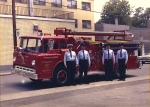 Ancien camion de pomp
Ancien camion de pomp
ier de Vanier, ... -
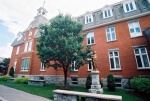 Building of the Daugh
Building of the Daugh
ters of Wisdom ... -
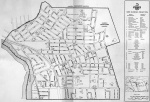 Carte de Vanier, Otta
Carte de Vanier, Otta
wa, 1970 -
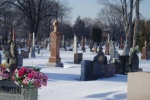 Cimetière Notre-Dame
Cimetière Notre-Dame
à Vanier, Ottaw...
-
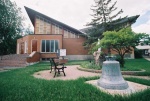 Église Marie-Médiatri
Église Marie-Médiatri
ce, Vanier -
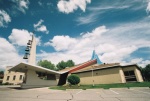 Église Notre-Dame de
Église Notre-Dame de
Lourdes à Vanie... -
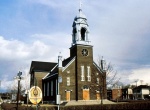 Église Saint-Charles
Église Saint-Charles
à Vanier, Ottaw... -
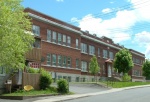 Former Genest School,
Former Genest School,
Vanier, Ottawa
-
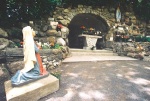 Grotte Notre-Dame de
Grotte Notre-Dame de
Lourdes à Vanie... -
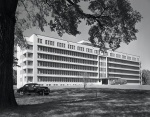 L'hôpital Montfort (V
L'hôpital Montfort (V
anier, Ontario)... -
 La bibliothèque publi
La bibliothèque publi
que de Vanier, ... -
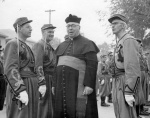 Le Curé Barrette avec
Le Curé Barrette avec
des Zouaves po...
-
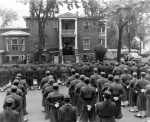 Les zouaves pontifica
Les zouaves pontifica
ux à Eastview, ... -
 Montreal Road in East
Montreal Road in East
view (now Quart... -
 Mural des frères Potv
Mural des frères Potv
in, Vanier, Ott... -
 Mural of Father Barre
Mural of Father Barre
tte, Vanier, Ot...
-
 Mural of Georges P. V
Mural of Georges P. V
anier, Vanier, ... -
 Mural of Locomotive 3
Mural of Locomotive 3
426, Vanier, Ot... -
 Murale « Au jeu », ré
Murale « Au jeu », ré
alisée en 2003... -
 Murale «Le chemin de
Murale «Le chemin de
Montréal en 195...
-
 Murale de l'hôtel Jan
Murale de l'hôtel Jan
eville, Vanier,... -
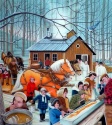 Murale de la cabane à
Murale de la cabane à
sucre des Père... -
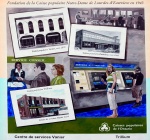 Murale de la Caisse p
Murale de la Caisse p
opulaire de Van... -
 Murale de la collabor
Murale de la collabor
ation
-
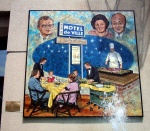 Murale du Châteaubria
Murale du Châteaubria
nd, Vanier, Ott... -
 Murale du restaurant
Murale du restaurant
Il Vagabondo à ... -
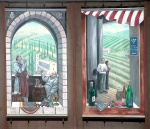 Murale du vin, Vanier
Murale du vin, Vanier
, Ottawa, réali... -
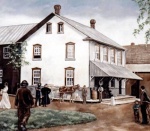 Murale illustrant le
Murale illustrant le
magasin Duroche...
-
 Murale S.O.S. Montfor
Murale S.O.S. Montfor
t, réalisée en ... -
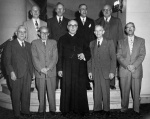 Nine founders of the
Nine founders of the
secret society,... -
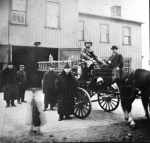 Old Vanier Fire Truck
Old Vanier Fire Truck
, Ottawa -
 Protest march during
Protest march during
Opération S.O.S...
-
 Riche écrin de style,
Riche écrin de style,
1987 (showing ... -
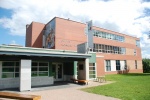 Richelieu-Vanier Comm
Richelieu-Vanier Comm
unity Centre, w... -
 Scolasticat des Pères
Scolasticat des Pères
Blancs à Eastv... -
 Vanier today
Vanier today
Notes
NOTES
1. In 1877, jurisdiction for the three villages was transferred from the Township of Gloucester to the Township of Carleton.
2. The Company of Mary was founded in France by Louis-Marie Grignion de Montfort (1673-1716) in 1705.
3. In particular, the fight in 1913 against Regulation XVII preventing instruction in French, which was suspended in 1927 and repealed in 1947.
4. Richelieu International, which was first called Société Richelieu, is the only exclusively French-speaking international organization. Founded in Canada in 1944, its objective is to defend and promote the French language and Francophone culture. The first club was started the following year in Ottawa. Today there are clubs around the world, particularly in countries which are members of the francophonie (like Canada, Belgium, Switzerland, Luxembourg, Romania, Senegal, Niger and the Antilles). See the official site: www.richelieu.org.
5. A Brief History of Quartier Vanier, http://www.museoparc.ca/circuitvanier/a-brief-history-of-quartier-vanier/
6. Including the City of Ottawa, the Regroupement des organismes du patrimoine franco-ontarien, the Association des auteurs et auteures de l’Ontario français, the Vanier Business Improvement Area, and the Trillium Foundation of Ontario.
7. The 1990s saw the creation of the “French Quarter” (quartier français), a section of Montreal Road that brings together a group of stores, offices, and specialty businesses that display their Francophone character through the architecture of the buildings, signage, and services offered in French. See Gilbert, 1999.
8. Among these diverse projects are: Nicolini`s 1990 conversion of a building on Dupuis Street to loft apartments; the construction of two condominium buildings by Groupe Lépine in 2003 and 2005 (Les Terrasses Amélie and Les Terrasses Gabrielle); the ReDevelopment Group project to convert the Cadieux school and its grounds to housing units (Le Saint-Denis); and the Claridge Homes project called Edinburgh Common, begun in 2007, which is a mix of row house and walk-up town homes, along with two high rise condominiums (one 20 storeys, the other 24 storeys).
9. On this topic, read Kenza Benali, Le Plateau Mont-Royal: du quartier ouvrier au plus célèbre quartier de Montréal (1970-1995), Saarbrücken, Éditions Universitaires Européennes, 2010, 375 p.
10. J-M. Ouimet, Le chaînon manquant, Liaison, no131 (2006), p. 8.
11. See the study of North Vanier and South Vanier in Ottawa’s Neighbourhood Study (http://staging.neighbourhoodstudy.ca/profiles/profiles.php). The combined statistics for North and South Vanier (areas separated by Montreal Road) for 2006 show that these immigrants come from the following areas: 33% from Europe, 27.5% from Asia or the Middle East, 13.5% from the Caribbean, 7.5% from Africa, 7% from North or Central America, 7% from the United States.
Bibliographie
Bourassa, A., Monette, L.L. et Régimbald, Denis P., La petite histoire de Vanier, Ottawa, Éditions O.V.U.L., 1975, 96 pages.
Centre du Patrimoine Ouvrier d’Ottawa, Ville d’Ottawa, http://whc-cpo.ca/index_f.html, consulté le 30 novembre 2010.
Direction Ontario. Chasse aux trésors : Découvertes francophones : Vanier à Ottawa. Vanier la Gauloise. 2010.http://www.directionontario.ca/champlain/chassevanier.cfm
Gilbert, Anne, Espaces franco-ontariens, Ottawa, Éditions du Nordir, 1999, pp. 11 – 25 et 125 à 153.
Gordon, David, « Weaving a Modern Plan for Canada’s Capital : Jacques Gréber and the 1950 Plan for the National Capital Region », Urban History Review. vol. 29, no 2., 2001, pp. 43 – 61.
Gordon, David et Gournay, Isabelle, « Jacques Gréber : Urbaniste et Architecte », Urban History Review, vol. 29, no 2, 2001, pp. 3 – 5.
Gréber, Jacques, Plan of the National Capital, Canada. General Report, Ottawa, 1950, Bibliothèque et Archives Canada. NMC HT169 .C32088 1950.
Gréber, Jacques, Plan of the National Capital, Canada. Atlas. Annexed to the General Report, Ottawa, 1950, Bibliothèque et Archives Canada. NMC G 1149 08645C3 1950.
Lamontagne, Catherine, « Vanier célèbre ses 100 ans d’histoire», Le Droit [Ottawa], 19 mai 2009, http://www.cyberpresse.ca/le-droit/franco-plus/200905/19/01-857857-vanier-celebre-ses-100-ans-dhistoire.php.
Orali, Philippe, « Vanier célèbre ses cent ans», Le Droit [Ottawa], 20 mai 2009, http://www.cyberpresse.ca/le-droit/actualites/ottawa-est-ontarien/200905/20/01-858326-vanier-fete-ses-cent-ans.php.
Ville de Vanier, Mémoire de la Ville de Vanier : Étude du Fonctionnement de la Municipalité Régionale D’Ottawa-Carleton, Ottawa, 1989.

